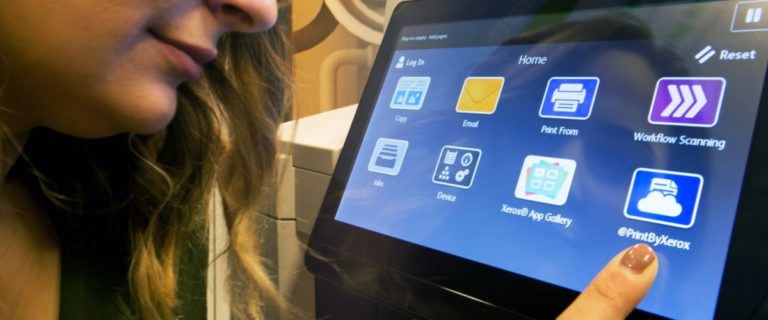Futurist Anders Sorman-Nilsson discusses how companies can preserve the best of analogue processes in the digital age.
By Giovanna Fabiano
Anders Sorman-Nilsson jokingly refers to himself as a “reformed lawyer,” a career that lasted all of three weeks after he realized it wasn’t the right fit.

After a stint at a marketing consultancy, he branched off on his own, founding the think tank, Thinque, in 2005 and consulting big-name companies on how to adapt to change in an increasingly “digitized” world. (Clients have included Apple, Cisco and Xerox.)
The issue hits close to home. In 1917, Anders’ great-grandfather started a clothier business in Stockholm. He prided himself in knowing the first names and family history of his clients and believed in personal, face-to-face connections.
Nearly a century later, the family business still exists, but Anders’ parents are struggling to connect with clients in a changing world, battling online retailers who offer convenience and cheaper prices, even if the items are lower quality.
Anders believes the key to his family business’ survival is merging the old and the new: Finding a way to hold on to the traditions that made his great-grandfather successful while adapting to the technology that modern customers expect.
These days, the Australian-Swedish futurist, innovation strategist and author divides his time between consulting and speaking engagements, focusing on the concept of “digilogue” — the convergence of digital and analogue.
Anders recently talked about how he helps companies achieve the right balance between the two.
Countless businesses, particularly companies with long histories, have failed in the last decade, blaming an inability to keep up with a fast-paced digital world. What are some key mistakes companies make that ultimately lead to their failure?
Digital disruption is a combination of what’s happening in external communication and technology as much as anything. It comes down to a communications challenge. When you’re driving digitization initiatives, you might see several of the owner partners not really adopting the technology. What kind of message does that send to the rest of that organization? You want to make the complex simple through technology but sometimes, there’s a very heavy resistance.
A typical example of this is a client of mine who had a fantastic YouTube campaign. An advertising company came in and really worked with their employment banks, spoke about their workplace culture —lots of nice things that win the hearts and minds —but no one was able to view it because YouTube was blocked on their server.
I still have companies send me documents in 2003 Microsoft PowerPoint. Eleven years later, they haven’t upgraded the way they should have. Large organizations can get very much stuck in being slow to move, and trying to protect market share and not being able to adopt the latest technology.
On the other hand, startups sometimes move too fast and often find themselves on the “bleeding edge” instead of the “leading edge.” Sometimes they’re too early and might not go mainstream.
In a speech on the future of agriculture, you talk about your family’s clothier business in Sweden and your mother’s reluctance to “digitally amplify” the store in order to compete with the likes of Amazon and eBay. Is that a metaphor for what’s happening in almost every industry these days, from retail to farming?
Let me see if I can answer this way. Despite all of this rush to digitize and find the latest for as cheap as possible, vinyl record sales are up 20 percent. Why is that when we have Spotify or digital downloads? You don’t remember those like you remember your first vinyl record or your first cassette. Digital can sort of seem ephemeral, but it doesn’t necessarily touch the heart. Timelessness means timeliness, old meets new, modern meets traditional … it’s quite important to combine the timeless wisdom of older staff with that digital combination. When you get that mix right, magic can happen.
You stepped in and helped your parents tell the story of your family business in a digital way, with a video of your father explaining how to make a traditional Windsor knot on a tie. How important is it for businesses to correctly package their products these days and what are some key elements to include?
My parents are finally understanding that digital is not a threat. Even if the business doesn’t survive and thrive, at least there will be a nice digital playbook of everything we stand for. It’s time to stop just singing in the shower hoping people will come into the shop … it’s about retaining the digital communications.
As you look to the future, remember the past as well. It’s about sustainable development, not just throwing away the analogue bathwater for the sake of it.
For startups, it looks a little different. They might be able to brand and digitally engage. You have a great website, but are you able to win friends and influence?
How are some ways companies can discover this balance, or “sweet spot,” if you will, of analogue and digital?
Some of these trends seem sort of mutually exclusive, but there’s a great mantra by F. Scott Fitzgerald: “The test of a first-rate intelligence is the ability to hold two opposing ideas in the mind at the same time, and still retain the ability to function.”
Maybe “digilogue” says analogue and digital are not mutually exclusive, but can co-exist. We have to look at how the digital makes the complex simple in some ways.
An example: The New York consumer has really sought the experience of farm to table. We can read on the menu that the fish we’re about to consume has been line caught within 50 kilometers. But can it be verified? With digital traceability, nowadays it’s not just farm to table or farm to fork, but farm to iPhone.
You can scan the rib-eye steak in a supermarket, through the QR code and see its whole lifecycle. That brings this whole craving of farm to fork into the digital realm, where digital storytelling can really emerge.
Anders Sorman-Nilsson will speak at Xerox’s simple@work conference. He is one of several world-renowned speakers and experts who will help you find ways to turn your business processes into real advantages. simple@work is scheduled for March 18 and 19 at Cipriani Wall Street in New York City.
To share your thoughts on simplification, as well as your ideas on how you strike the balance between digital and analogue, use the #SimpleAtWork hashtag on your social network.
(This article was first published on Real Business, a website from Xerox that provides ideas and information for decision makers in business and government.)




Hi! Quick question that’s entirely off topic.
Do you know how to make your site mobile friendly?
My web site looks weird when browsing from my iphone 4.
I’m trying to find a theme or plugin that might be able to correct
this issue. If you have any suggestions, please share.
Thank you!
Hi Harriett:
My knowledge of the gears and doo-dads behind this blog is limited, so I asked around. Our theme is based on Avada from Themeforest.
I hope this helps. Best of luck with your blog!